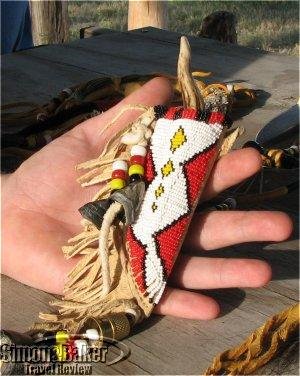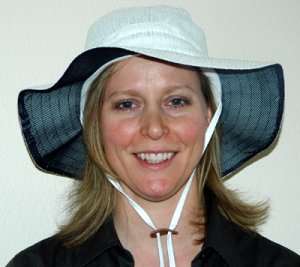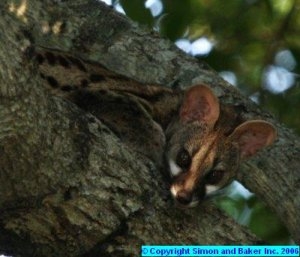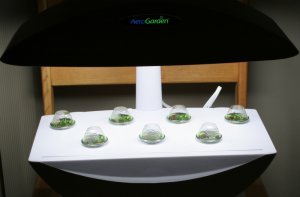Luxury Travel Review

Off the beaten path in South Dakota
Article and photos by Elena del Valle

A week of road travel in off the beaten path South Dakota just as spring was warming in early June left an impression. Although with only 780,000 residents the state is sparsely populated we never felt lonely. As we made our way across South Dakota, small towns that were just dots on the state map blossomed into state parks, historic and Native American sites, and popular attractions such as the town of Deadwood. We also took time to visit the world famous Mt. Rushmore National Monument and Crazy Horse Memorial.
Striking scenery, unspoiled and uncrowded attractions, welcoming residents and affordable prices made South Dakota noteworthy. In our whirlwind weeklong trek we drove east to west starting in the state’s most populated city, Sioux Falls, and departing from Rapid City on the western border near the Black Hills. On our way, we spotted ring neck pheasant, turkey, prairie dogs, mule deer (including a female with triplets), prong horn antelope, wild horses, peafowl, and bison.

We stopped in Watertown, home of the lovingly restored historic Mellette House, where the first governor of South Dakota resided; and the Redlin Art Center, an ode to Terry Redlin, oil painter and Watertown native. We were fortunate to arrive at the Sisseton State Park during the closing day of the fort’s annual historical festival, a potpourri of historic and military reenactments, American Indian dancers, music and western products for sale.
The following morning found us in the town of DeSmet enjoying a guided tour of author Laura Ingalls Wilder’s restored Victorian house; and the nearby Laura Ingalls Wilder Homestead, a former working farm converted into a popular tourist attraction, where we had a glimpse of life in the old west.

We spent the night in Pierre (pronounced “peer”), the state capital, where the weather was picture perfect. During our stay, we explored the interesting Cultural Heritage Center, and enjoyed an outstanding sunset boat ride on the Missouri River. From Pierre we drove west to the Badlands National Park. En route we enjoyed a brief visit at Wall Drug Store, home to an art collection, various shops, attractions, fudge factory, ice cream shop, restaurant and bookstore all under one management.
We stopped at the Pine Ridge Indian Reservation where we visited the Lakota Sioux Heritage Culture Center Complex. We also had an opportunity to chat with local residents Emerson and Jerilyn Elk, owners of Cankpé-Opí Crafts, who showed off their bead artwork and shared insights about the Wounded Knee Massacre.

We arrived at Hot Springs in the Black Hills in time for a hearty dinner. The following morning we visited the nearby Wild Horse Sanctuary, home to more than 500 wild horses, on our way to the famous Wind Cave National Park, the fourth longest caves in the world set below 28,000 acres of prairie and pine forest. We spent that night at the cozy and delightful French Creek Ranch bed and breakfast – a favorite.

Before turning in for the evening we visited the Crazy Horse monument, a work in progress for the last 50 years and going strong. The following day, we braved windy and cold weather, to enjoy a brief stop at Mount Rushmore National Monument. On our way to Rapid City, we went to see the handsome bronze sculptures at Kevin Costner’s Tatanka Story of the Bison attraction before stopping for a yummy lunch at the Latchstring Inn in Spearfish Canyon. We flew home the following morning reminiscing about a week that began with gentle and green scenery along sleepy towns and ended with the conspicuous Black Hills and stories of Wild Bill Hickok and Calamity Jane.
2007 Tourism for Tomorrow winners from Australia, Indonesia and USA

Costas Christ, chairman of the Tourism for Tomorrow Awards judges, Andrew Skeat, Great Barrier Reef, Lisha Mulquenny, Great Barrier Reef, Jean-Claude Baumgarten, president, WTTC and Jeff Hanle, Aspen Skiing Company
Lisbon , Portugal – The World Travel & Tourism Council (WTTC) recently announced the winners of the 2007 Tourism for Tomorrow Awards at the 7th Global Travel & Tourism Summit. The Awards recognize and promote best practices in tourism development around the world. The 2007 winners in the four categories are: Destination Award Great Barrier Reef, Australia; Conservation Award, Aspen Skiing Company, United States; Investor in People Award, Nihiwatu Resort , Indonesia; and Global Tourism Business Award, Lindblad Expeditions, United States and global.
The winners were selected by a panel of five judges chaired by Costas Christ. The judging process included on-site evaluation visits of award finalists by a team of sustainable tourism experts. The judges were Christ, judging chairman, Tourism for Tomorrow Awards, United Kingdom; Graham Boynton, group travel editor, The Telegraph Media Group, United Kingdom; John Briceño, Deputy Prime Minister and Minister of Natural Resources, Local Government and the Environment, Belize; Fiona Jeffery, managing director, World Travel Market, United Kingdom; and Hitesh Mehta, director of Ecotourism, EDSA Landscape Architects, Planners & Graphic Designers, United States.
“Over the past few years, we have witnessed a positive growth in environmentally sustainable business activity not only among the Travel and Tourism industry but also beyond. Consumer consciousness has encouraged companies, and especially WTTC companies, to engage in sustainable programs by delivering environmentally friendly products,” said Geoffrey Kent, chairman, WTTC. “While there remains a need to generate profit, the Tourism for Tomorrow Awards are helping demonstrate that companies can balance business and economic growth with ethics and sustainability.”
The 2007 awards were sponsored by Adventure in Travel Expo, British Airways, Espírito Santo Tourism, Fairmont Hotels & Resorts, Opodo, Reed Travel Exhibitions and TAP Portugal. Media partners include 4hoteliers, BBC World, ETurboNews, National Geographic Adventure, Newsweek, Simon & Baker Travel Review, The Telegraph Media Group, TravelDailyNews, the Travel Channel, TravelMole, Travel Weekly, TTN Middle East and WOW.travel.
“The 2007 Tourism for Tomorrow Awards winners represent a major turning point in the global tourism industry. Gone are the days when there were only a handful of ecolodges or a few small tour operators who were doing sustainable tourism successfully. Today’s best practice models also represent major tourism destinations and global tourism companies that are helping to protect cultural and natural heritage and support the well being of local peoples,” said Christ during the ceremony.
WTTC is a forum for business leaders in the travel and tourism industry. The organization counts among its members chief executives of one hundred of the world’s leading travel and tourism companies. WTTC works to raise awareness of travel and tourism as one of the world’s largest industries, employing approximately 231 million people and generating over 10 per cent of world’s gross domestic product.
Photo: World Travel & Tourism Council
New hat protects against intense sun, practical for travel

Photo: Josette King
Josette King tested the Solarveil Sun Hat recently and liked it. Here’s what she had to say: With its SPF 20+ rating, this lightweight wide-brimmed hat delivered superior sun protection without sacrificing style or comfort. Its generous three-inch brim offered excellent face and neck protection, and featured a navy lining that effectively reduced glare.
The hat was made of patented loose-weaved Solvarveil® fabric, a complex yarn structure touted for its superior breathability, wicking properties and the ability to block UVB and UVA rays. Click here to read the complete article.

South Africa Sabi Sand Reserve properties offer luxury game viewing in an exclusive setting

A shy animal peeked at us from the safety of a tree
One of our teams was in the Sabi Sand Reserve near Kruger National Park recently and discovered several luxury safari lodges worth a visit. In addition to Big Five game viewing, the properties offered extraordinary accommodations, fine meals and wines, and massages in exclusive private lands dedicated to pampering guests and showing off South Africa’s wildlife.
Our team visited popular lodges like the Mala Mala Main Camp. They also went to the River Lodge at Exeter Reserve, Forest Health Spa at Cybele (near Sabi Sand Reserve), Singita Boulders, Rattray’s and Ivory Lodge at Lion Sands. Singita Boulders had two newly built connecting beautiful family suites with private plunge pools. Boulders guests had access to an onsite wine cellar, a well stocked gift shop and an onsite spa.
One of our team’s favorites was Rattray’s, owned by the same family that owns the famous Mala Mala Main Camp. Guests at the exclusive property could take advantage of in suite massages, private plunge pools and game viewing for a maximum of four guests per vehicle. We loved the unexepected surprise laptop computers in suite with WiFi connectivity. Ivory Lodge at Lion Sands stood out for its striking suites with private plunge pools, in suite massages and ecotourism orientation.
AeroGarden indoor plant growing device neat tool for gourmets

Our newly assembled AeroGarden
Ask the best chefs and they all same the same regarding quality ingredients. The secret to any gourmet dish is to start with fresh and premium products. It can’t get any fresher than growing produce at home. When we first heard about the indoor soil free hydroponics AeroGarden system we were instantly curious. If successful, the new device would allow us to grow herbs, veggies and fruits at our convenience year round without the need of a green thumb. Add to that the many benefits promised in promotional materials and we had to try it.
It was surprisingly easy to assemble the garden from the boxed components. An intense white light simulated sunlight, shining like a beacon from our kitchen and stimulating plant growth. Our kit came with everything necessary including ready to use Salad Greens pods. All it required was assembly, water and electricity.

Within days of the set up, we began to see signs of growth and soon there were salad seedlings in every container. The AeroGarden containers were watered regularly and consistently thanks to the built-in mechanism and timer. When it became necessary to replenish the water and nutrients a light at the base of the AeroGarden lit up to alert us. When the lettuce reached the “ceiling” it was time to raise the cover a notch so the light bulbs wouldn’t scorch the plant leaves.

The lettuce leaves were tender and delicious, unlike any supermarket produce. We enjoyed them individually as a snack and in salads as well as plain and with salad dressing. Toward the end of the growth cycle we were traveling and were not as vigilant as we should have been with the nutrient and water replacements. This seems to have caused the last of the salad greens to become bitter.
We liked the unit so much we sent one to a friend who has since made excellent use of her unit, growing several cycles of produce. Soon we plan to try out the other kits like strawberries, tomatoes, gourmet herbs, French, Italian and Japanese herbs, chili peppers, basil (with seven varieties of basil), petunias, and the Master Gardener package with eggplants, peppers, green beans, and spinach.
Luggage scale saves aggravation and airline surcharges

Photo: Magellan’s
A couple of week’s ago a friend was forced to leave behind $100 in champagne from her luggage at the airport in Houston, Texas. She had exceeded her luggage allowance in business class for her international flight; and although she was willing to pay extra to take the bubbly, the airline refused. She was forced to leave the bottles behind at the airport.
We have avoided that fate and excess luggage fees on more than one occasion by carrying a light weight, inexpensive ($9) and simple to use gadget, a portable luggage scale. After packing our luggage and zippering each bag, we lift it with the scale to see how much it weighs. If it exceeds our weight allowance we lighten it. We take the 8-ounce scale with 75 pound weighing capacity with us. On the return trip, when our luggage is bursting with souvenirs, we pull out the scale and repeat the operation.
Using the scale is fast and easy, especially with two of us. While one person lifts the luggage with the scale, the other observes the weight needle carefully. In order to use the scale effectively we have to be able to lift the suitcase or bag completely off the ground.
To weigh the luggage, we attach the handle of the suitcase to the scale hook and lift the cushioned handle of the scale. That means, if the suitcase weighs 50 pounds, we must be able to lift the 50-pound bag. We have used the scale and taken it with us on at least six international trips and it has worked like a charm.

Click here to purchase scale







